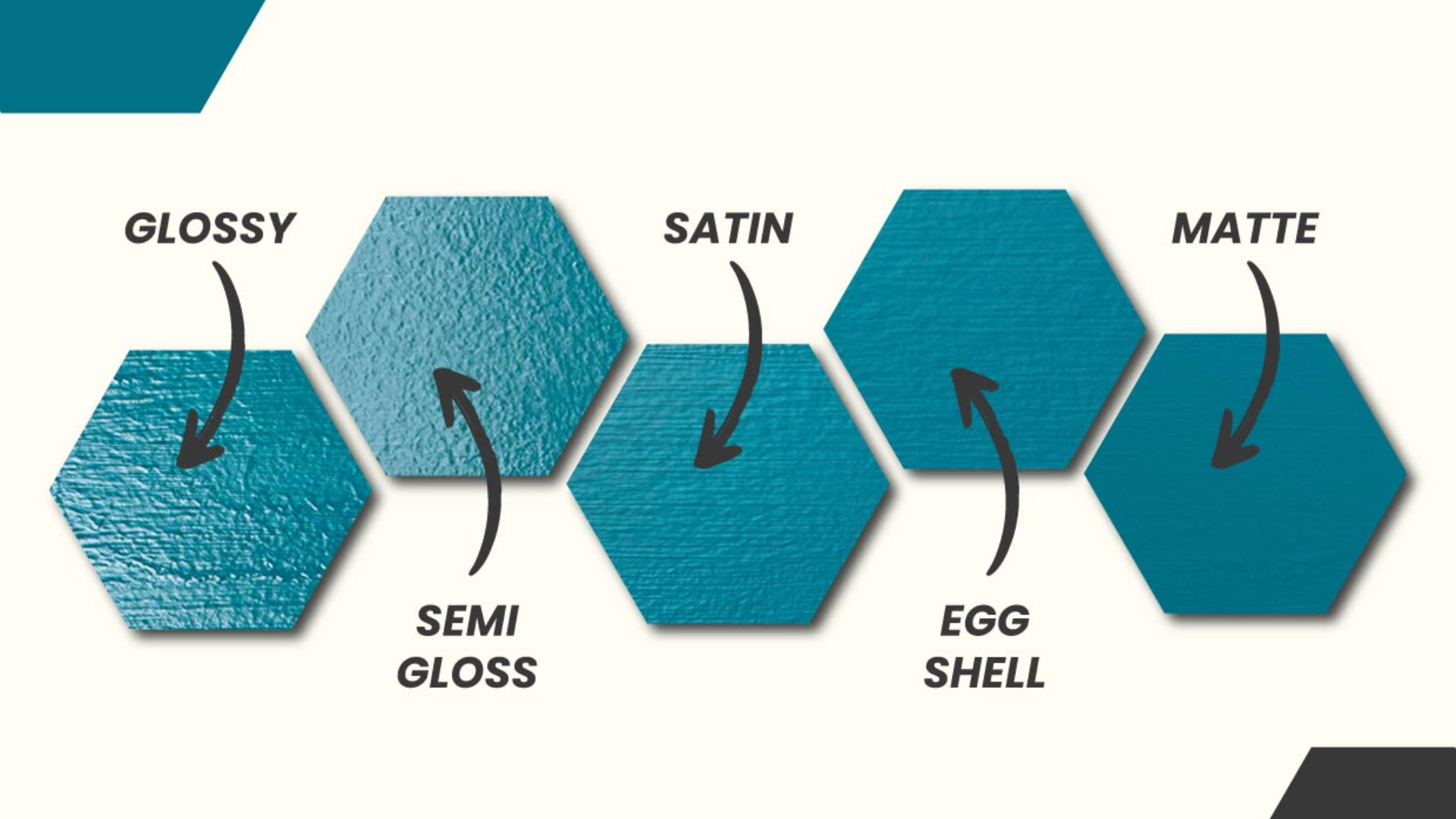What kind of paint finish actually works best for your space?
I used to grab whatever looked good on the shelf, until I ended up with a shiny mess in my hallway and a flat finish in my kitchen that stained in a week. Sound familiar?
If you’re wondering what all the different sheens and textures actually mean, and how to pick the right one, you’re in the right place.
I’ve been through the trial and error, so you don’t have to. In this guide, I’ll walk you through each paint finish in plain terms.
I’ll tell you what works where, what doesn’t, and why it matters. Let’s ensure your next paint job looks great and lasts.
What Is a Paint Finish and Why Does It Matter?
A paint finish is the final look and feel of your painted surface.
It can be flat, satin, semi-gloss, or high-gloss, each with its own texture, shine, and durability.
The finish isn’t just for appearance. It also affects how well the paint holds up to cleaning, moisture, and everyday wear.
For example, a flat finish might hide wall flaws but won’t handle scrubbing, while a gloss finish cleans easily but shows every bump.
I’ve made the mistake of using the wrong finish before, and it made a mess of a simple job.
Choosing the right one means your paint looks good, lasts longer, and works better for your space. Skip it, and you’ll likely regret it.
Types of Paint Finishes and Where They Work Best
Each paint finish gives a different look and feel. More importantly, it affects how your walls or trim handle light, moisture, and cleaning. Let’s discuss the common types of finishes, what makes them unique, and where they work best in a home.
1. Flat or Matte Finish
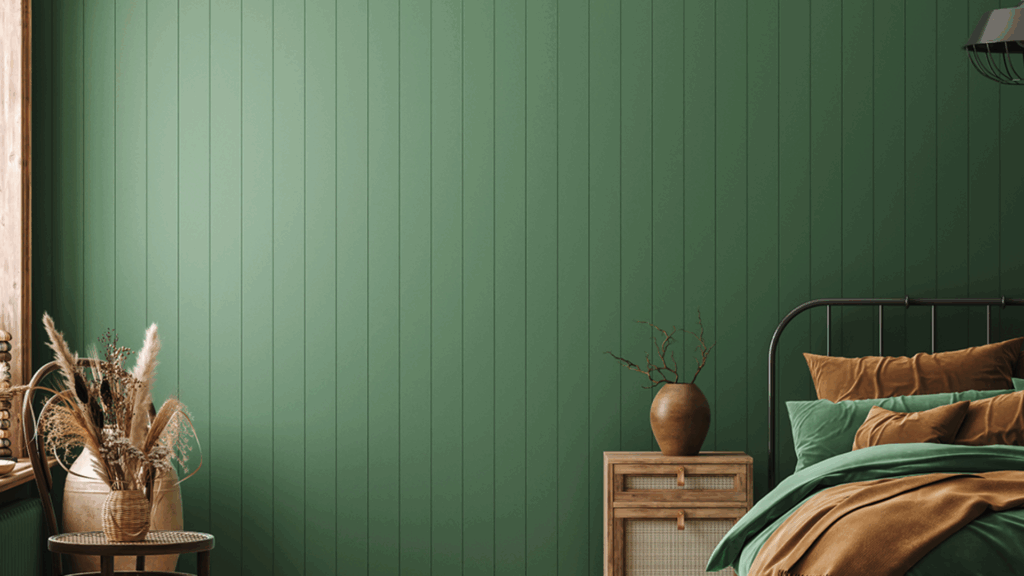
This finish has no shine at all. It absorbs light, which helps hide small wall flaws like dents, patches, or uneven surfaces.
Flat paint creates a smooth, soft look, often seen in older homes or modern spaces going for a muted style.
Best for: Ceilings, adult bedrooms, formal dining rooms, and low-traffic areas
Pros:
- Hides imperfections well
- Gives a calm, elegant look
- Touch-ups blend in easily
Cons:
- Stains easily
- It can’t be scrubbed hard without damaging the surface
I used flat paint in a living room once to hide patchy drywall. It looked clean and even, but after a year, I had to repaint due to smudges and handprints near the light switch.
2. Eggshell Finish
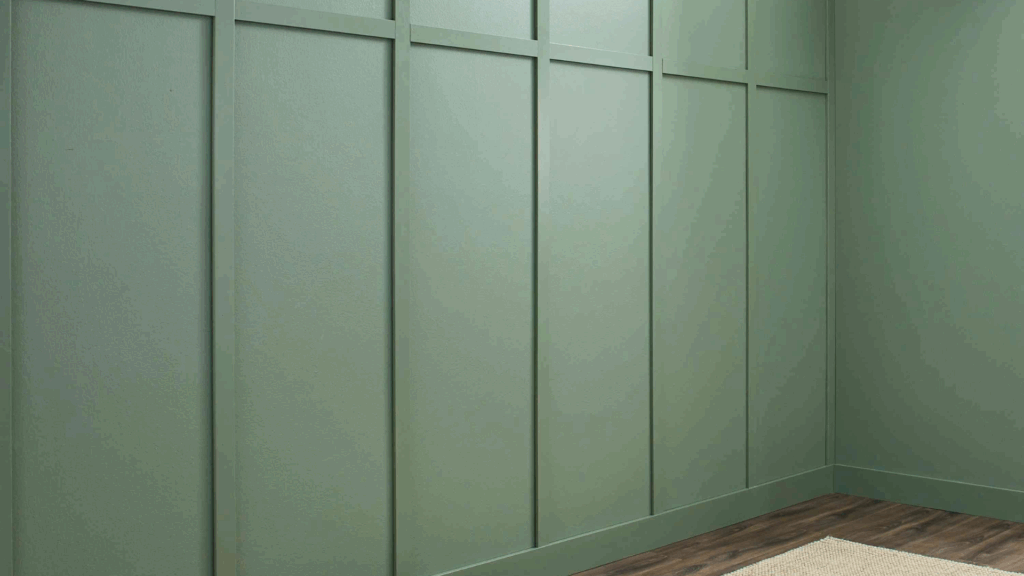
Eggshell sits between flat and satin in terms of shine. It has a soft glow, like the surface of an actual eggshell.
It reflects a little light but still helps cover mild flaws, making it a go-to for many rooms.
Best for: Living rooms, hallways, and guest bedrooms
Pros:
- More washable than flat
- Hides minor flaws
- Looks smooth and slightly polished
Cons:
- Still not great for heavy scrubbing
- May highlight bigger imperfections under strong lighting
If you’re looking for something subtle but easier to maintain than flat, this is a solid choice for general walls in most homes.
3. Satin Finish
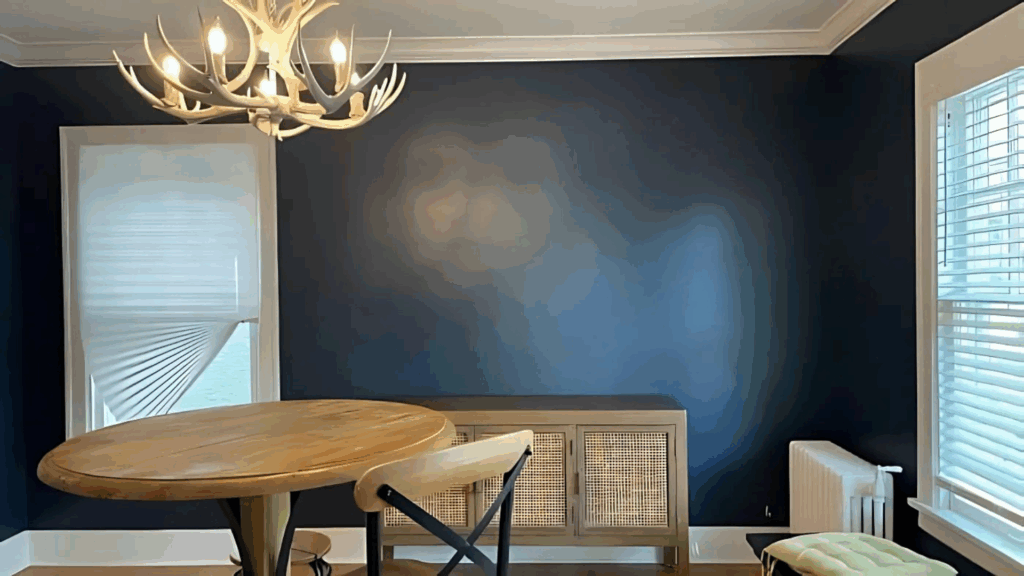
Satin paint has a noticeable sheen and feels smooth to the touch. It strikes a good balance between look and durability.
This finish is great for places where light cleaning happens often, but you still want a warm appearance.
Best for: Kitchens, kids’ rooms, bathrooms, and high-traffic hallways
Pros:
- Easy to wipe down
- Withstands moisture better than eggshell
- Has a soft, inviting shine
Cons:
- Surface prep matters, brush marks and wall flaws show up more
- It can be tricky to touch up cleanly
I used satin paint in a small bathroom, and it held up well to steam and splashes without peeling or fading.
4. Semi-Gloss Finish
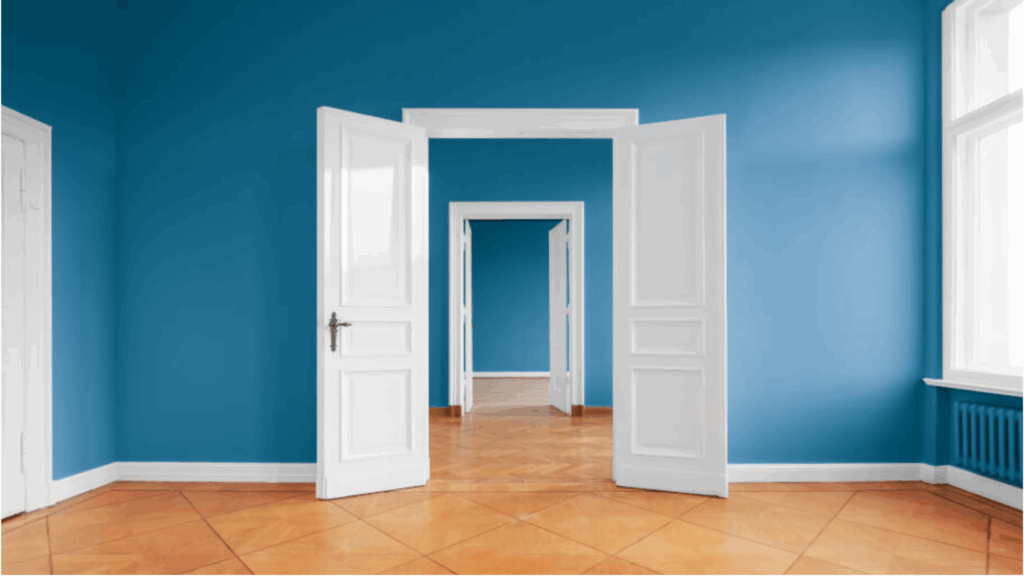
This finish is shinier than satin and very durable. It reflects a lot of light, making it ideal for areas that get messy or need frequent cleaning. It also adds a crisp, clean look to trim and doors.
Best for: Trim, baseboards, kitchens, bathrooms, laundry rooms
Pros:
- Highly washable
- Resists moisture
- Adds contrast and depth next to matte or eggshell walls
Cons:
- Highlights every bump, crack, or uneven patch
- Needs careful prep and application
If you want a finish that stays clean and stands out, semi-gloss is hard to beat, just don’t use it on walls that aren’t perfectly smooth.
5. High-Gloss Finish
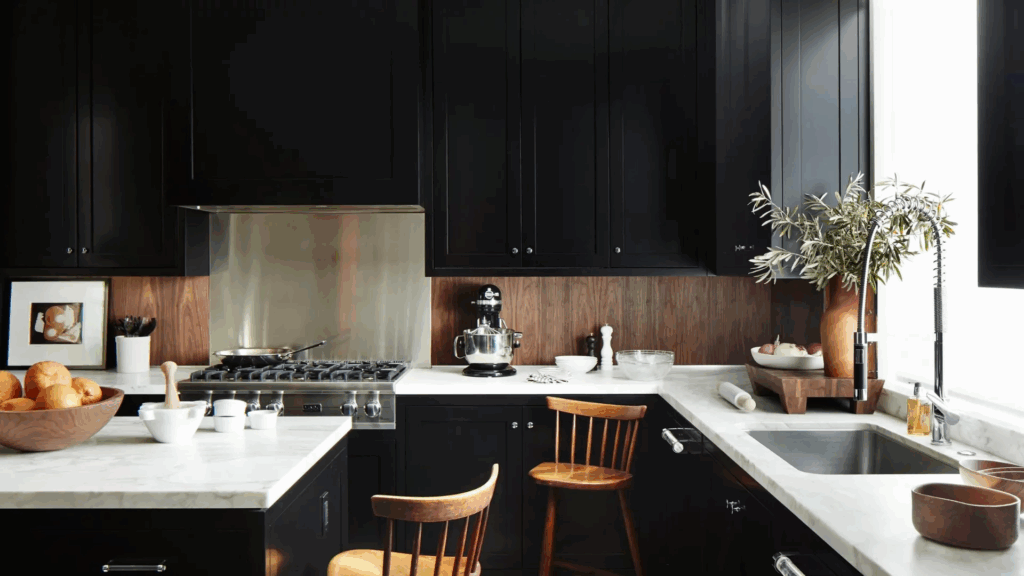
High-gloss paint is the most reflective of all finishes. It’s often used for dramatic contrast or for surfaces that need constant wiping. This paint acts almost like a coating, giving a slick, shiny appearance.
Best for: Cabinets, furniture, front doors, and trim
Pros:
- Super durable
- Very easy to clean
- Great for high-impact areas or design features
Cons:
- Shows every flaw; the surface must be smooth
- Harder to apply without streaks or brush marks
Unless you’re aiming for a bold look or dealing with heavy use, use this finish sparingly. When done right, though, it makes features pop.
Paint Finish: Comparison Guide
Let’s break down each paint finish based on real-world factors like durability, ease of use, and visual impact. I’ll help you quickly match the right finish to your project needs, so you won’t have to second-guess your choice.
| Finish Type | Durability | Ease of Application | Touch-Up Compatibility | Visual Impact |
|---|---|---|---|---|
| Flat / Matte | Low – prone to marks | Very easy – hides strokes | High – blends well | Soft and smooth, hides wall flaws |
| Eggshell | Moderate – some scrubbing okay | Easy – smooth application | Moderate – touch-ups can show | Slightly warm and polished |
| Satin | Good – handles cleaning | Medium – prep needed | Harder – touch-ups may flash | Soft sheen adds light and depth |
| Semi-Gloss | Very good – scrubbable | Tricky – needs smooth walls | Low patches often stand out | Crisp and clean, it reflects light |
| High-Gloss | Excellent – very tough | Difficult – streaks show | Very low – hard to blend | Bold and dramatic, mirror-like |
Conclusion
Choosing the right paint finish can feel confusing at first, but now you’ve got a clear picture of what each type offers.
You came here wanting to understand paint sheens and where they work best, and I hope this guide made that easier.
I’ve been there too, stuck with the wrong finish that didn’t clean well or showed every flaw. It’s frustrating and costly.
The good news is, with a little planning, you can avoid those mistakes. Think about how you use each space, how much wear and tear it gets, and how much shine you want.
The right finish makes a big difference in how your walls look and hold up over time. You’ve got this.

